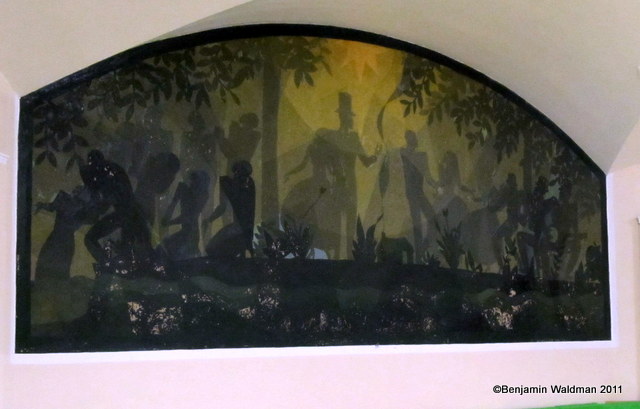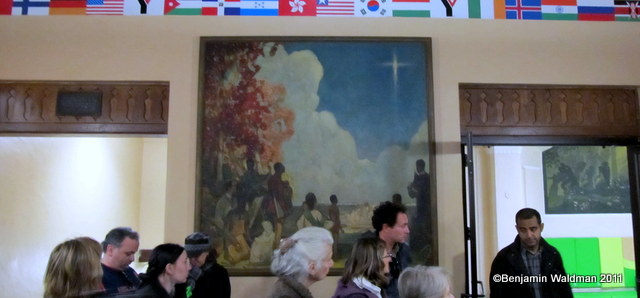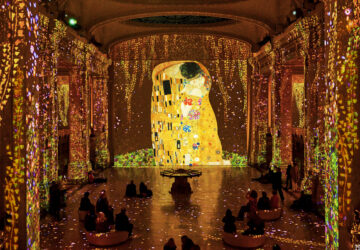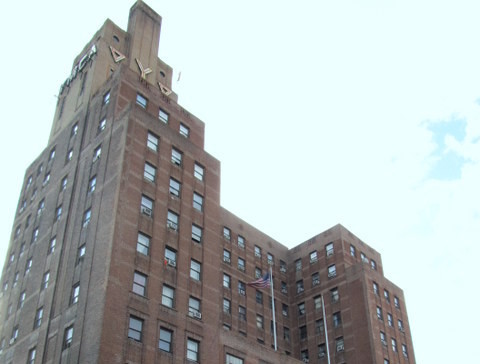As Black History Month comes to a close in 2016, we decided to explore an overlooked artistic gem in Harlem. The Harlem Branch of the Y.M.C.A., which is located at at 180 West 135th Street, contains an exquisite example (though in need of a thorough restoration) of a rare African-American contribution to the Works Progress Administration (WPA). The building itself has also been in the news recently as one of the many backlog properties which the New York City Landmarks Preservation Commission will decide in the near future if it merits a landmarks designation or should be calendared and face potential demolition. At last week’s publi meeting, the Harlem Branch of the Y.M.C.A was prioritized for designation.
 Aaron Douglas’ Evolution of Negro Dance Mural
Aaron Douglas’ Evolution of Negro Dance Mural
While much of the building has been renovated over the years, some of the Y.M.C.A.’s original artwork by Alfred Floegel and noted African-American artists William E. Scott and Aaron Douglas remain. One of the murals was designed by Aaron Douglas, an African-American painter and illustrator whose works appear in the collections of the National Gallery of Art and the Metropolitan Museum of Art. Douglas’ mural is entitled Evolution of Negro Dance and was painted in 1935. The mural depicts silhouetted figures representing the different periods in African-American history from slavery through the Harlem Renaissance through dance.
 An unidentified mural inside the Harlem Y.M.C.A.
An unidentified mural inside the Harlem Y.M.C.A.
The Harlem Branch of the Y.M.C.A. was constructed between 1931 and 1932 and was designed for African Americans, since the Y.M.C.A. maintained racially segregated branches until 1946. The building served as a focal point for members of the community. Langston Hughes began as a feature editor on the staff of the Harlem Y’s newsletter and everyone from Malcolm X and Martin Luther King, Jr. to George Washington Carver, Jackie Robinson, Paul Robeson, and Earth Kitt either stayed or performed at the Harlem YMCA.
The immense building was designed to accommodate 4000 men and 1000 boys with “a kitchen and cafeteria, dining rooms, club rooms, a music/hobby room, and a theater in the basement; separate social rooms for boys and men, a chapel, a billiard room, a ‘log cabin room,'” a swimming pool, showers, lockers, a banquet hall, two gymnasiums, a handball court and 254 dormitory rooms.
Next, discover 12 of NYC’s most surprising landmarks, or check out something on the very opposite end of the spectrum: inside 10 of NYC’s private clubs.






